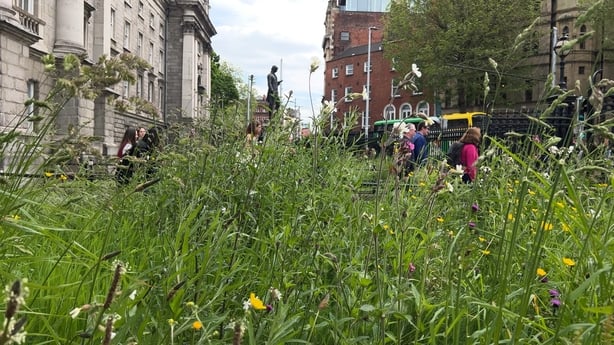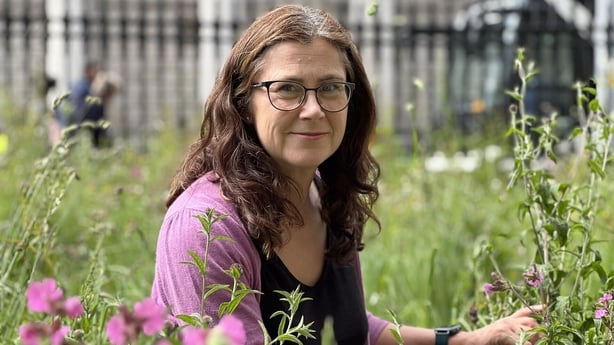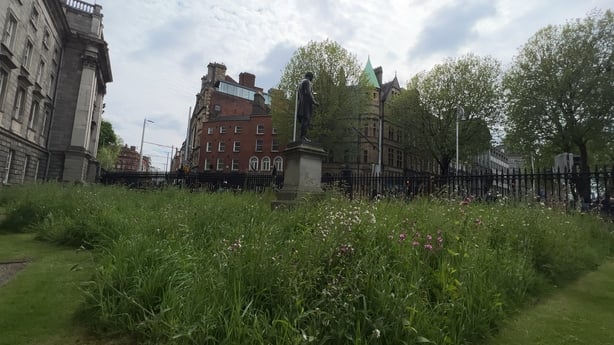On International Biodiversity Day, the wildflower meadow at Trinity College in Dublin city centre is a blooming good demonstration of how to promote biodiversity in urban spaces.
The formal lawns at Trinity's front gates were dug up in July 2020 after a public vote.
They were replaced with meadow lawn turf that included 25 types of native Irish wildflower.
Almost three years on, the wildflowers are in bloom on College Green, and the project continues to turn heads.


Jane Stout, professor in botany in TCD School of Natural Sciences and deputy chair of the All-Ireland Pollinator Plan, said: "Whereas before we had the short, tightly cropped lawn looking very pristine, we now have this quite variable, to some, quite messy-looking, more biodiverse frontage to our university.
"It's important to make this a talking point because the biodiversity crisis and the loss of biodiversity is something people really aren’t very aware of.
"It's something that can seem quite abstract. People don't necessarily understand what biodiversity means. It means the variety of life.
"So, what we have done here is we've made more diversity, more variety of life, in a place that is very iconic and very traditional.
"We are demonstrating that there isn't just one way to manage your urban green spaces. There are lots of ways you can do it."

Professor Stout admits the transformation from manicured lawns to wildflower meadow has sometimes divided opinion.
But it was a hit with the students and visitors who spoke to RTÉ News.
Faith Harbert, from Colorado in the US, is studying a Masters in Irish Writing at the university.
"I noticed it when I came in the Fall and again a few weeks ago when it started to bloom and I thought it was really pretty," Ms Harbert says.
"It gives the school something extra and something unique. I'm not a big fan of grass".
Diana, from Virginia in the US, is also studying a Masters in Irish Writing at the university.
"It lets nature be at one with the people in the city. I think it's important to have that coexistence," she says.
Anne and Alan have returned home to Ireland for a visit from New Zealand.
"I love the spontaneity of a wildflower meadow like that. You don't know what is going to come up and I think it's lovely," Anne says.
"It will attract the butterflies and the other insects and keep them here. Especially in the inner city, that’s important," Alan adds.

Biodiversity is declining faster than at any time in human history.
Scientists say conserving and restoring natural spaces, and the biodiversity they contain, is essential for limiting emissions and adapting to climate impacts.
"There is no reason why we can't have nature in the middle of the city as well as the countryside," Professor Stout said.
"It's so important to bring that conversation into the heart of the city."







